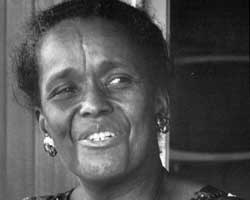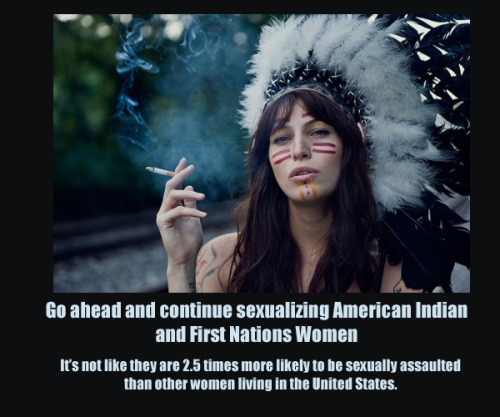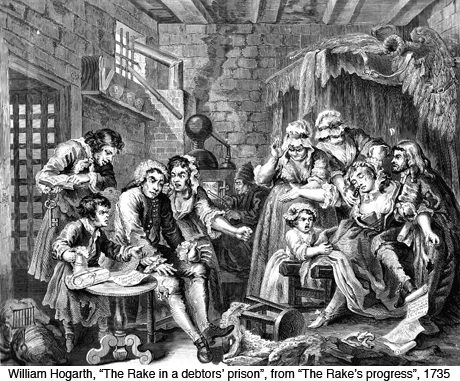http://endofcapitalism.com/2010/07/31/t ... ew-part-3/The End of Capitalism?: Interview of Alex Knight – Part 3. Life After Capitalism
July 31, 2010
The following exchange between Michael Carriere and Alex Knight occurred via email, July 2010. Alex Knight was questioned about the End of Capitalism Theory, which states that the global capitalist system is breaking down due to ecological and social limits to growth and that a paradigm shift toward a non-capitalist future is underway.
This is the final part of a four-part interview. Scroll to the bottom for links to the other sections.
Part 3. Life After CapitalismMC:
Moving forward, how would you ideally envision a post-capitalist world? And if capitalism manages to survive (as it has in the past), is there still room for real change?
AK: First let me repeat that even if my theory is right that capitalism is breaking down, it doesn’t suggest that we’ll automatically find ourselves living in a utopia soon. This crisis is an opportunity for us progressives but it is also an opportunity for right-wing forces. If the right seizes the initiative, I fear they could give rise to neo-fascism – a system in which freedoms are enclosed and violated for the purpose of restoring a mythical idea of national glory.
I think this threat is especially credible here in the United States, where in recent years we’ve seen the USA PATRIOT Act, the Supreme Court’s decision that corporations are “persons,” and the stripping of constitutional rights from those labeled “terrorists,” “enemy combatants”, as well as “illegals.” Arizona’s attempt to institute a racial profiling law and turn every police officer into an immigration official may be the face of fascism in America today. Angry whites joining together with the repressive forces of the state to terrorize a marginalized community, Latino immigrants. While we have a black president now, white supremacist sentiment remains widespread in this country, and doesn’t appear to be going away anytime soon. So as we struggle for a better world we may also have to contend with increasing authoritarianism.
I should also state up front that I have no interest in “writing recipes for the cooks of the future.” I can’t prescribe the ideal post-capitalist world and I wouldn’t try. People will create solutions to the crises they face according to what makes most sense in their circumstances. In fact they’re already doing this. Yet, I would like to see your question addressed towards the public at large, and discussed in schools, workplaces, and communities. If we have an open conversation about what a better world would look like, this is where the best solutions will come from. Plus, the practice of imagination will give people a stronger investment in wanting the future to turn out better. So I’ll put forward some of my ideas for life beyond capitalism, in the hope that it spurs others to articulate their visions and initiate conversation on the world we want.
My personal vision has been shaped by my outrage over the two fundamental crises that capitalism has perpetrated: the ecological crisis and the social crisis. I see capitalism as a system of abuse. The system grows by exploiting people and the planet as means to extract profit, and by refusing to be responsible for the ecological and social trauma caused by its abuse. Therefore I believe any real solutions to our problems must be aligned to both ecological justice and social justice. If we privilege one over the other, we will only cause more harm. The planet must be healed, and our communities must be healed as well. I would propose these two goals as a starting point to the discussion.
How do we heal? What does healing look like? Let me expand from there.
Five Guideposts to a New WorldI mentioned in response to the first question that I view freedom, democracy, justice, sustainability and love as guideposts that point towards a new world. This follows from what I call a common sense radical approach, because it is not about pulling vision for the future from some ideological playbook or dogma, but from lived experience. Rather than taking pre-formed ideas and trying to make reality fit that conceptual blueprint, ideas should spring from what makes sense on the ground. The five guideposts come from our common values. It doesn’t take an expert to understand them or put them into practice.
In the first section I described how freedom at its core is about self-determination. I said that defined this way it presents a radical challenge to capitalist society because it highlights the lack of power we have under capitalism. We do not have self-determination, and we cannot as long as huge corporations and corrupt politicians control our destinies.
I’ll add that access to land is fundamental to a meaningful definition of freedom. The group Take Back the Land has highlighted this through their work to move homeless and foreclosed families directly into vacant homes in Miami. Everyone needs access to land for the basic security of housing, but also for the ability to feed themselves. Without “food sovereignty,” or the power to provide for one’s own family, community or nation with healthy, culturally and ecologically appropriate food, freedom cannot exist. The best way to ensure that communities have food sovereignty is to ensure they have access to land.
 Ella Baker championed the idea of
Ella Baker championed the idea of
participatory democracySimilarly, a deeper interpretation of
democracy would emphasize participation by an individual or community in the decisions that affect them. For this definition I follow in the footsteps of Ella Baker, the mighty civil rights organizer who championed the idea of participatory democracy. With a lifelong focus on empowering ordinary people to solve their own problems, Ella Baker is known for saying “Strong people don’t need strong leaders.” This was the philosophy of the black students who sat-in at lunch counters in the South to win their right to public accommodations. They didn’t wait for the law to change, or for adults to tell them to do it. The students recognized that society was wrong, and practiced non-violent civil disobedience [video], becoming empowered by their actions. Then with Ms. Baker’s support they formed the Student Non-violent Coordinating Committee (SNCC) and organized poor blacks in Mississippi to demand their right to vote, passing on the torch of empowerment.
We need to be empowered to manage our own affairs on a large scale. In a participatory democracy, “we, the people” would run the show, not representatives who depend on corporate funding to get elected. “By the people, for the people, of the people” are great words. What if we actually put those words into action in the government, the economy, the media, and all the institutions that affect our lives? Institutions should obey the will of the people, rather than the people obeying the will of institutions. It can happen, but only through organization and active participation of the people as a whole. We must empower ourselves, not wait for someone else to do it.
Justice is supposed to protect the weak and oppressed from the strong and powerful, but in capitalist society it too often plays out as the reverse. As I write this, the Oakland police officer who shot Oscar Grant in the back and killed him was just handed a verdict of “not guilty” for murder, and found “guilty” of the lesser charge of “involuntary manslaughter.” How can it be “involuntary” if he was caught on video putting a gun in Oscar’s back and pulling the trigger? Is it because the police officer is white and Oscar Grant was black? What would the verdict have been if the roles were reversed and the police officer had been shot in the back? This isn’t justice, it’s injustice.
So to reach an ideal future, we would need to eliminate systems of oppression that benefit one group, like whites, at the expense of another group, like people of color. Racial justice aims to overturn this disparity. Of course we also have to put an end to patriarchy, the domination of society by men. Women have been organizing for centuries to gain equal rights, and to live without fear of violence or silencing. Theirs is a struggle for justice, too. Queer and trans justice mean that everyone should have the basic right to express their sexual preferences or gender identity however they so choose. Finally, I don’t think we can speak of justice as long as society is divided into rich and poor. A just society would ensure that everyone has access to resources to meet their basic needs, like food, housing, education, health care, transportation, clean water and air, and everything necessary for a decent livelihood.
The concept of intersectionality is also crucial. It means we must appreciate the complex ways that different forms of oppression intersect with one another. A simple example is that the injustice experienced by a black woman is different than for a white woman or a black man. These are not new concepts of justice, but I advocate them proudly.
Sustainability is such a buzzword these days, with corporations adopting sustainability statements and selling us “green” products, that it’s close to becoming meaningless propaganda. In a deeper sense, sustainability means human economy existing in harmony with the rest of the planet’s ecology, rather than as an alien force outside it and exploiting it. I draw inspiration for this definition from the work of the late, great social ecologist Murray Bookchin.
Bookchin also theorized that “the domination of nature by man stems from the domination of human by human.” In his book
The Ecology of Freedom he points out that humans lived for 95% of our history as interconnected members of the web of life, and that it was the rise of class society about 10,000 years ago that first divided humans into rich and poor, and alienated us from the Earth’s natural balance. Class societies are committed to exploiting the land, air and sea for all they can provide. The ruling class sees their human subjects and the environment as things to use for enriching themselves and gaining power over other class societies. If they fail to do this, they themselves risk being conquered by more powerful neighbors. Class hierarchy therefore can never be sustainable.
Jared Diamond and others have written in detail how the Babylonian, Mayan, Roman and many other empires have collapsed because they abused their ecosystems faster than those ecosystems could restore themselves. This is why the “Fertile Crescent” of the Middle East, where class society originated, is now largely desert. In a sense, capitalism learned from these prior empires to spread its damage over the entire planet. But what it couldn’t learn was that exploiting the Earth and humanity to enrich the powerful few is always unsustainable in the long run.
Now that this global class society appears headed towards its own collapse, I would expect continents, nations, and regions to go their own directions. This makes it hard to envision exactly how sustainability will develop in the future. What works in the cities might not work in the country, and the same could be said about drylands and wetlands, North and South, etc. One point that seems clear is that technology must be appropriate to its surroundings, because you can’t use wind turbines where there’s no wind, or solar panels where there’s not enough sun.
Appropriate technology means that it must serve human need, while also respecting the needs of the ecosystem on which it depends. Permaculture is an example of an appropriate technology for growing food – the idea is that gardening should actually restore the soil and nourish the ecology. I’ll add that the movement towards a sustainable future must be global, pursuing all of humanity’s shared long-term benefit. Instead of competing, we must work together, learning from each other’s successes and failures.
One sustainability success story is the organic revolution in Cuba. Around 1990, the collapse of the Soviet Union led to the loss of cheap oil for the island nation of Cuba. Cuba had entirely depended on that oil for their food production, as they maintained an industrialized agriculture system heavy on machinery and petrochemicals. I should add that this industrial food model is the same model the IMF and World Bank have pushed on most of the world. In neoliberal language, this was called the “Green Revolution.” But without oil, this industrial model cannot produce food.
The Cubans recognized this in the most visceral sense – facing an economic collapse that literally threatened starvation. They had no choice but to rapidly transition all food production over to an organic model. Petrochemical fertilizers and pesticides were abandoned, in favor of “biofertilizers” and “biopesticides,” natural solutions that mimicked the work of ecology. At the same time, tractors were replaced with human and animal effort, and the entire population had to relearn the farming skills of their ancestors. Gardens suddenly appeared on rooftops, in backyards and vacant lots, and the government raised farmers’ pay above that of engineers.
 Farmers at the Organiponico de Alamar, a neighborhood agriculture project in downtown Havana
Farmers at the Organiponico de Alamar, a neighborhood agriculture project in downtown HavanaAmazingly, despite being enclosed within a persistent US embargo, this genuine Green Revolution succeeded. No Cuban starved, though everyone lost 20 pounds. Today about half of Havana’s produce is grown within the city limits. As the global oil and energy shortage deepen, the entire world will need examples like that of Cuba. It is not just that the economy must use less resources than it does now. We have to face the equally important question of how to distribute the resources that exist. Transitioning to a sustainable path means prioritizing necessary economic functions like food production over wasteful and irresponsible expenditures on things like weapons or luxury items. For this reason, the transition away from a highly industrialized, capitalist model need not bring poverty and stress. If we use this opportunity to re-prioritize our economy towards meeting human and ecological needs, downscaling can actually improve quality of life and community self-reliance.
Last on the list of guideposts, but certainly not least, love is the force that ties everything together. I don’t speak of the sappy, saccharine love that comes in the form of millions of throwaway Valentine’s cards and gifts every year. What we need is a guide towards respect for life and all creatures, and a spirit of support and cooperation with our fellow human beings. This force, I believe is deep, genuine love. The kind of transformative love that writer bell hooks talks about when she writes, “Love will always move us away from domination in all its forms. Love will always challenge and change us.”
If capitalism is a system of abuse, the task ahead of us is fundamentally one of
healing. In any abusive relationship, where one asserts control over another through physical, emotional, psychological, or sexual violence, the only path to healing is to end the abuse. For this reason, we must continue to speak up and challenge the violence capitalism perpetrates daily against the planet and all of humanity. However, we must also understand that the survivor, or the recipient of the abuse, may not recognize their partner’s behavior as abusive, and will typically internalize some amount of shame and guilt, feeling that they brought the treatment on themselves. They may justify the abuse by believing that they deserve it as punishment for real or imagined wrongs.
Even if the survivor names the abuse, they may stick with the relationship and futilely try to “change” or “reform” their abuser. Perhaps they will lower their expectations by reasoning that they cannot “do any better” than this relationship, and so will resign themselves to the abuse. Meanwhile the abuser is likely to attempt to isolate the survivor from friends, family, or other potential sources of support. As time goes on, the survivor is likely to feel increasingly trapped and powerless. The situation is not going to get any better until they end the relationship and rediscover their independence as a self-reliant entity.
I believe this analogy helps clarify why the population living under capitalism often does not appear eager to rebel against the injustices of the system. We have come to internalize our abuse, feeling powerless to escape it, and not recognizing that there are other ways to live. Every one of us has experienced abuse in this system. It comes in many forms, including (but not limited to): poverty, racism, repression of sexuality, pollution and environmental injustice, violence in our communities and schools, police brutality, sexism, ableism, neglect from parents or loved ones, isolation, sexual violence, imprisonment/punishment, and the private hell of domestic abuse. Without the support to be able to name this abuse, and go through the process of healing our wounds, too often we hide our scars and hope the pain will go away. When it doesn’t, we are left with anxiety, depression, addiction and mental illness.
Love can set us free. We must commit to loving ourselves in a deeper sense than many of us ever have. Capitalism uses propaganda, distractions, and boredom to numb us to the violence and enclosures it perpetrates, and often it is easier to remain numb than to deal with our emotional trauma. We have tuned out. We ignore the pain and anguish our bodies are communicating to us, and remain silent. Loving ourselves is really about committing to a process of healing: healing our bodies, healing our minds and our spirits, healing our communities, and healing the planet. I believe in our capacity to heal.
First we must name the abuse – the social and ecological crises we are experiencing, and move past the shame of victimhood. We may have participated in capitalist society and truly believed it was right, but we did not deserve to be treated this way. Next, we must end the relationship with capitalism that is responsible for the harm. When we take this step, the future will open up and we will see immense opportunity in every direction. We will experience a sense of liberation, finally grasping the independence and self-empowerment that we have always been capable of.
A Society That Values LifeIf we follow the five guideposts of freedom, democracy, justice, sustainability and love, I believe the path will lead towards
a society that values life. Capitalism is clear that it values money – profit – and not much else. With this single-minded focus, it leaves the well-being of humanity and the well-being of the planet too far down on the list of priorities. Those should be the top priorities. What is more important than life? This imbalance is the root of our troubles. It’s the reason our era is an era of war, poverty and unemployment, consumerism, drug addiction, corrupt politicians, and ecological catastrophe. We live in a society that straight-up doesn’t care about us. Capitalism cares about an individual if they can make a profit, but if not, it doesn’t care if they’re lying facedown in the gutter. Perhaps we’ve come to accept it, but this is totally backwards logic. It flies in the face of every system of morality, every major religion, and simple common sense.
What if we reversed the priorities and created a society that valued life more than it valued numbers on a spreadsheet? What would that look like? Conflicts resolved through dialogue and reconciliation rather than violence? Sharing when we’ve got enough and our neighbors don’t? Asking for help when we need it, and actually receiving it? Listening to our elders and our youth, and I mean
really listening? Working meaningful jobs that make a difference in the world? Spending more time in our gardens, volunteering in the community, or playing with our children? Overcoming addiction and mental illness? Doing what’s in our hearts, and not just what will make the most money?
Does this sound unrealistic? Then remember the figure I quoted in response to the second question: $17 Trillion [PDF]. That’s how much money the US government has given to the banks since this crisis began, according to Nomi Prins. It’s such a huge number that it’s hard to fathom what that means. Let’s put it in perspective. On May 30, the cost of the wars in Iraq and Afghanistan hit a total of $1 trillion. So the bailouts have cost about 17 “wars on terror,” in just a year and a half.
The group Rethink Afghanistan made a Facebook application that suggests alternative ways we could have spent that 1 trillion dollars wasted on war. On the list: $12 billion to “hire every worker in Afghanistan for a year,” $930 million to clean up the BP oil spill, $23 billion for “health care for 1 million children for one year,” and the list goes on. The website Global Issues also estimates the following costs for universal access in all the world’s poor countries: $9 billion to provide clean drinking water and sanitation, $12 billion for reproductive health for all women, and $13 billion for basic health and nutrition. Even if these figures are underestimated, it seems clear that we could eradicate global poverty and eliminate the conditions that breed terrorists for just a fraction of the cost of occupying the Middle East with US soldiers and keeping capitalism on life support.
What would you do with $18 trillion? I trust the reader could come up with all kinds of good ideas! For myself I want to see every community self-sufficient with electricity and heat, coming from clean and renewable energy sources. Let’s make solar panels, wind turbines, geothermal, passive solar, and most importantly, energy efficiency, available to everyone regardless of income.
We have the resources. We have the technology. All we need is the power to change these priorities. Every day, people all over the world work towards gaining this power. Impoverished communities, youth and students, people of color, disabled folks, women and trans folks, workers, lesbian, gay and queer folks, religious and ethnic minorities, indigenous communities, and allies are organizing daily to end the trauma of capitalism and move towards a society that values life. This struggle is as old as time. As long as oppression has existed in the world, people have been organizing to undo it.
If the
End of Capitalism Theory is correct, then right now we find ourselves at a historic crossroads, where the old order of oppression is breaking down under the strain of ecological and social limits. Will it be replaced by a new form of oppression, perhaps even more violent and authoritarian, or will we begin to heal and put an end to oppression once and for all? It’s a question that only we can answer through our actions.
Many people across the US and the world are trying to answer this question. We are getting smarter at creating approaches that integrate both ecological justice and social justice. More and more people are beginning to see that economic growth is not the goal. The capitalist economy is large but poor – it does not meet the needs of the majority of humanity or the needs of the planet. We can create an economy that is smaller but richer. Some examples of people who developing and spreading this knowledge are the de-growth movement which is getting stronger in Europe, and the Post-Carbon Institute in the United States. Yes! Magazine and Democracy Now! are two media outlets that regularly highlight the solutions we need.
Detroit, more than any other city, displays the hope springing from the cracks in capitalist crisis. Detroit was once the home of the automobile industry, the example of technologic progress in America. That industry has fled and left tremendous disinvestment and poverty in its wake. But solutions are coming from the community. Poor black people are turning vacant lots into urban gardens and organic farms, so that now Detroit has more urban agriculture than any city in the US. Detroit City of Hope, an effort connected with 95-year-old long-time activist Grace Lee Boggs, is helping to coordinate efforts between community organizations re-imagining sustainable development in what used to be the “motor city.” Like a phoenix rising from the ashes, Detroit shows us that by joining together in a spirit of mutual aid and healing from trauma, regular people can begin to create a new world, now.
What If Capitalism SurvivesAs you point out, the
End of Capitalism Theory could be wrong. So what if capitalism survives this crisis as it did the others? In that case, I see two possible outcomes.
Option 1 is that the world literally comes to an end, either because of catastrophic climate change or nuclear warfare. The planet fries, the seas boil, and all life ceases, including humanity. This possibility is too horrific for me to imagine. I also happen to think it’s less likely than the second.
Option 2 is that either through renewed enclosures on the planet and the poor, pure dumb luck, or some combination of the two, President Obama and the world leaders manage to get the global economy back on a trajectory of growth, for another few decades. Perhaps they push through “cap and trade” and sell the atmosphere to polluters, opening up a new market for speculation. Or similarly they could force into existence a climate deal that includes REDD agreements that privatize pristine forests and displace the indigenous communities that have lived in them for thousands of years. Maybe they pump enough oil out of the tar sands, known as “the most destructive project on Earth,” and waste a lot of money on more nuclear reactors and ethanol plants in desperate attempts to mitigate some of the effects of peak oil. Slavery could be reinstated, perhaps along with debtors’ prisons to house the millions of Americans unable to pay back their student loans, credit cards, and mortgages. Or the ruling class could fall back on the tried-and-true strategy of escaping economic crisis by launching another war. They might enlist non-profits, academics, and even some “leftists” to promote the project by calling it neo-Keynesianism, or a Green New Deal, or some other snazzy title.
It sounds plausible. The problem with this option is that these are all, at best, temporary fixes. The fundamental contradiction of a system that requires endless growth on a finite planet would remain in place like the force of gravity on an airborne vehicle. It’s not the kind of thing that can be delayed forever. Once the fuel runs out, that sucker’s going down. Capitalism has stayed in the air through a lot of crises in the past, but it has only managed to buy more time until the next storm hits and throws the system into jeopardy even more starkly.
Sooner or later, capitalism will lose its forward momentum and there will be no technological fix, no new miracle energy source, no new round of enclosures that can pull it from its nosedive. The End of Capitalism Theory says this day will probably come sooner rather than later, and in that sense it’s a hopeful theory. But I think if we study the evidence of the ecological limits, like how soon peak oil is hitting, and the social limits, like the turmoil in China, we’ll see the system is either sputtering and about to go down, or has already entered freefall. If capitalism is already hurtling towards the rocks, then I believe the severity of the current crisis – which everyone agrees is rivaled only by the Great Depression, and this time is a much more global crash – begins to make sense. That’s what theories are good for, after all, helping us make sense of our experiences.
Thanks for the wonderful questions!
Alex Knight
July 2010
—–
Alex Knight is a proponent of the End of Capitalism Theory, which states that the global capitalist system is breaking down due to ecological and social limits to growth and that a paradigm shift toward a non-capitalist future is underway. He is working on a book titled “The End of Capitalism” and seeks a publisher. Since 2007 he has edited the website endofcapitalism.com. He has a degree in electrical engineering and a Master’s in political science, both from Lehigh University. He lives in Philadelphia, where he is a teacher and organizer. He can be reached at alex@endofcapitalism.com
Michael Carriere is an assistant professor at the Milwaukee School of Engineering, where he teaches courses on American history, public policy, political science, and urban design. He is currently working on a book, with David Schalliol, titled “The Death and (After) Life of Great American Cities: Twenty-First Century Urbanism and the Culture of Crisis.” He holds a Ph.D. in American history from the University of Chicago.—–
Click the links below for more of the interview:1. The current financial crisis is clearly a moment of peril for both individuals and the broader system of capitalism. But would it also make sense to see it as a moment of opportunity?
Part 1. Crisis and Opportunity2. Capitalism has faced many moments of crisis over time. Is there something different about the present crisis? What makes the end of capitalism a possibility now?
Part 2A. Capitalism and Ecological LimitsPart 2B. Social Limits and the Crisis3. Moving forward, how would you ideally envision a post-capitalist world? And if capitalism manages to survive (as it has in the past), is there still room for real change?
Part 3. Life After Capitalism

































